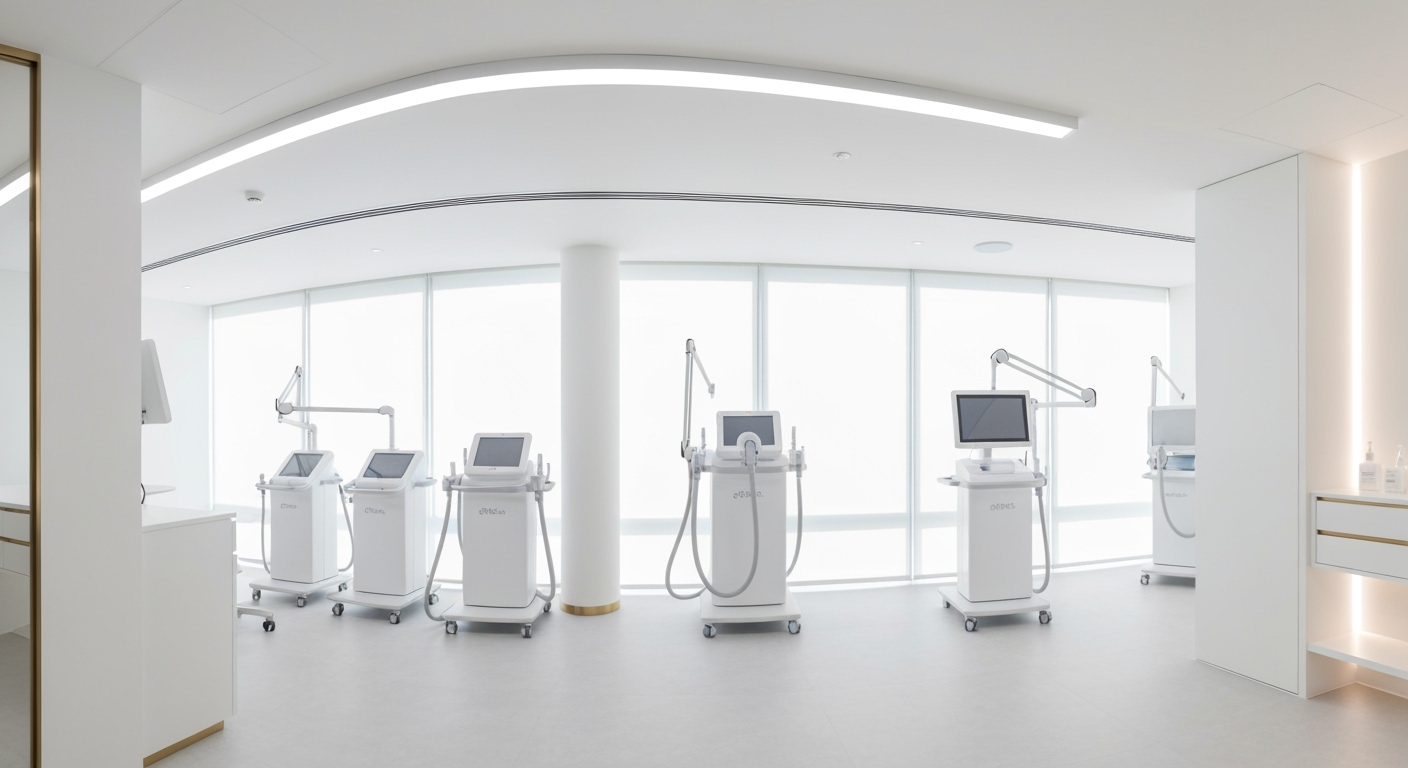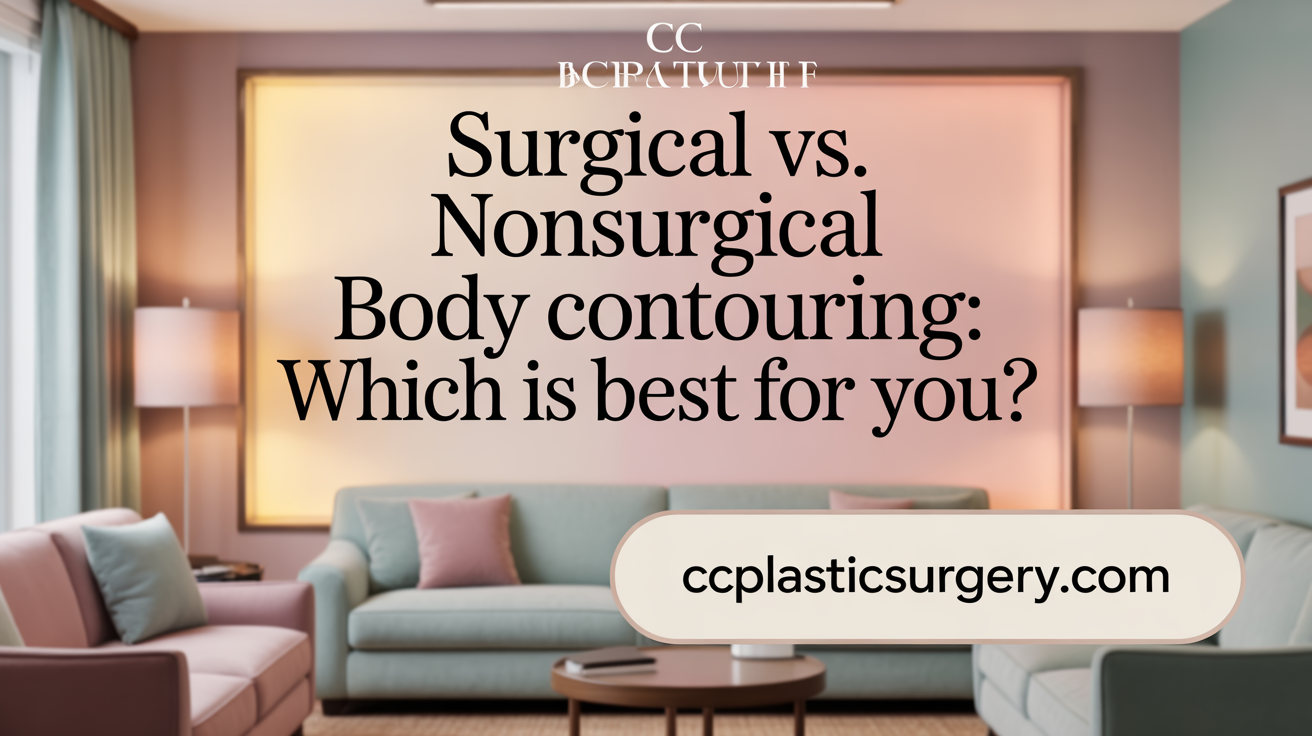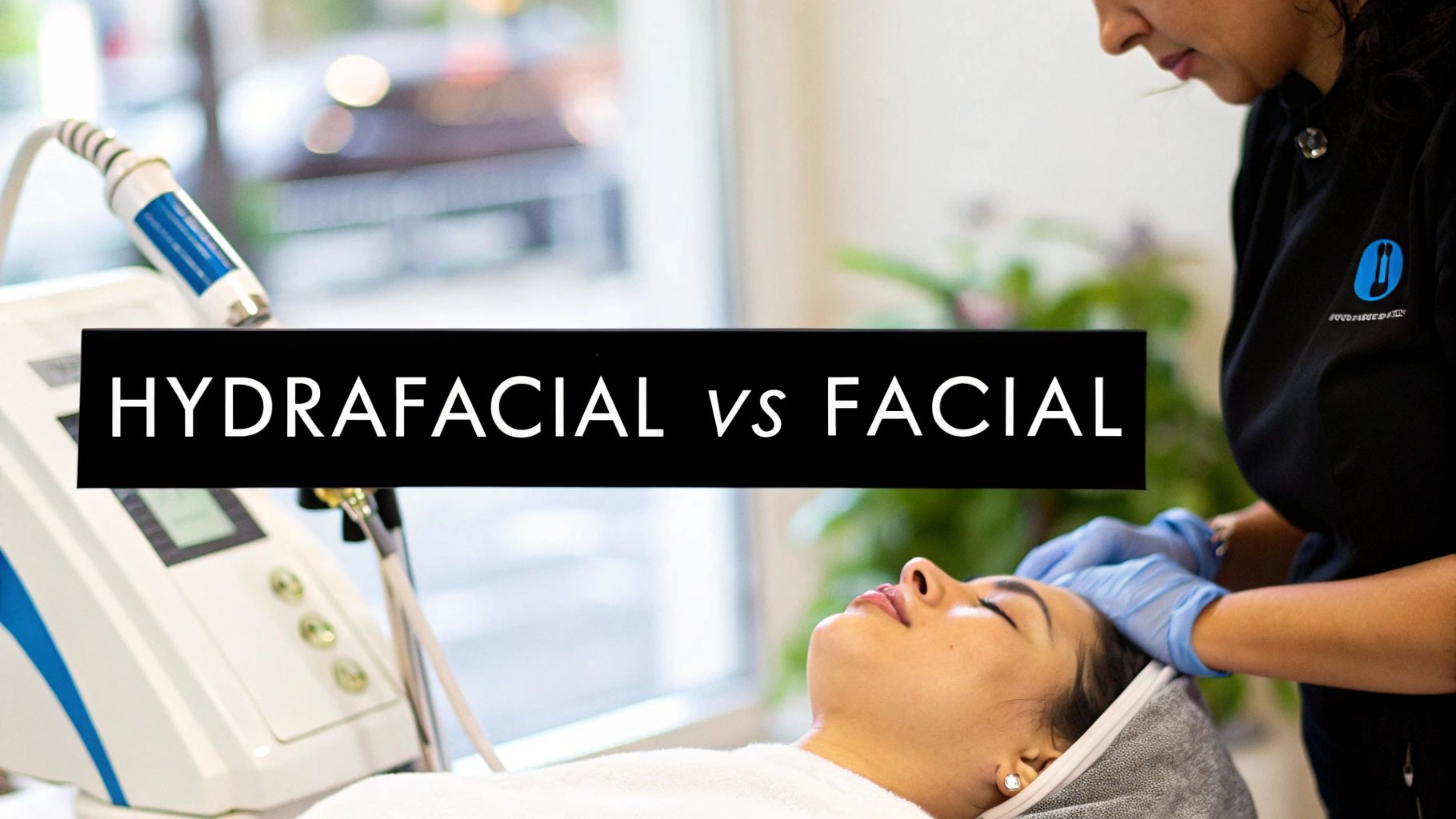
October 12, 2025
Anesthesia Types for Surgery A Patient's Guide
Discover the main anesthesia types for surgery. This guide explains general, regional, local, and sedation to help you prepare for your procedure.
Aug 25, 2025

Significant weight loss often brings a welcome transformation but can also leave behind excess skin and loose tissue. Body contouring offers a path to reshape and tighten the body, helping individuals regain confidence and comfort. This article explores surgical and nonsurgical options, benefits, risks, suitability, preparation, and what to expect during recovery, providing a comprehensive guide for anyone considering body contouring after weight loss.
Body contouring after significant weight loss is a collection of surgical procedures designed to remove excess skin and fat that remains after a person has lost a large amount of weight. When weight loss occurs rapidly or over a long period, the skin and underlying tissues can become loose and saggy because they have lost their elasticity.
The main goal is to reshape and tighten areas of the body to improve appearance and comfort. A common procedure in this process is the body lift, which targets multiple areas around the abdomen, back, and waist to remove loose skin circumferentially. Surgeons often combine skin excision with liposuction to improve contour and smoothness.
Typically, these surgeries are performed under general anesthesia and take several hours to complete. Results are visible immediately, with further tightening and settling occurring over the following months. Recovery involves managing swelling and bruising, with most patients able to return to desk work in two to three weeks. Full exercise routines usually resume after six to eight weeks.
Achieving long-lasting results requires maintaining a stable weight and a healthy lifestyle. Scars are carefully placed along natural lines and creases to minimize their appearance, often hiding beneath clothing or in skin folds. Overall, body contouring helps individuals achieve a more sculpted, toned, and proportionate body after massive weight loss.
 What are the main types of body contouring options available after weight loss?
What are the main types of body contouring options available after weight loss?
After significant weight loss, individuals often seek procedures to improve their body shape and address excess skin and stubborn fat deposits. These options broadly fall into two categories: surgical and nonsurgical treatments.
Surgical Body Contouring Procedures are more invasive and provide dramatic, immediate results. They often involve incisions to remove or lift excess skin and fat, as well as tightening underlying tissues. Common surgical options include:
| Procedure | Target Area | Details |
|---|---|---|
| Tummy tuck (abdominoplasty) | Abdomen | Removes loose skin and fat, tightens abdominal muscles |
| Arm lift (brachioplasty) | Upper arms | Reduces excess skin and fat, improves arm contour |
| Thigh lift | Thighs | Addresses sagging skin and stubborn fat pockets |
| Breast lift (mastopexy) | Breasts | Lifts and reshapes for a more youthful appearance |
| Liposuction | Various areas (abdomen, thighs, hips) | Suctioning removes localized fat deposits. |
These surgeries typically involve incisions, are performed under anesthesia, and require recovery time ranging from weeks to months. Postoperative care involves wearing compression garments, managing pain, and attending follow-up appointments.
Nonsurgical Fat Reduction and Skin Tightening Methods are less invasive with shorter down times. They include treatments like Cryolipolysis (CoolSculpting®), laser lipolysis (SculpSure®), ultrasound fat reduction (UltraShape, Liposonix), and injectable deoxycholic acid (Kybella®). These technologies work by destroying fat cells or shrinking the size of existing ones through controlled cooling, heating, or ultrasonic waves.
| Treatment | Method | Target Area | Typical Use Case |
|---|---|---|---|
| Cryolipolysis (CoolSculpting®) | Freezing fat cells | Abdomen, flanks, thighs | Ideal for isolated fat pockets, no surgery required |
| Laser fat reduction (SculpSure®) | Controlled heat | Abdomen, love handles | Suitable for targeted fat reduction |
| Injectable (Kybella®) | Chemical destruction | Submental area (chin) | Reduces double chin or small fat deposits |
| Ultrasound (UltraShape, Liposonix) | Focused sonic waves | Various regions | Gentle fat breakdown with rapid recovery |
| Red Light Therapy (UltraSlim) | Specific wavelength light | Various fat areas | Minimal discomfort, mild effect on fat shrinking |
These non-surgical options are suitable for patients at or near their ideal weight with isolated fat deposits. They do not significantly affect overall body weight but improve contour and appearance with virtually no downtime.
Comparison of Methods
| Aspect | Surgical Procedures | Nonsurgical Treatments |
|---|---|---|
| Invasiveness | More invasive, involves incisions and anesthesia | Minimally invasive or non-invasive, no incisions |
| Recovery Time | Weeks to months, some require hospital stay | Same-day procedures, immediate return to normal activities |
| Results | Immediate and highly noticeable | Gradual, less dramatic results |
| Ideal Candidate | Significant excess skin, loose tissue | Small fat pockets, aesthetic improvements desired without surgery |
| Risks | Bleeding, scarring, anesthesia complications | Swelling, redness, temporary discomfort |
Choosing between surgical and nonsurgical options typically depends on the amount of excess skin, the extent of fat deposits, overall health, and personal goals. A consultation with a qualified surgeon or specialist is essential to determine the best tailored plan.

Surgical body contouring procedures, such as liposuction, tummy tuck (abdominoplasty), arm lift, thigh lift, and skin removal surgeries, generally offer more noticeable and longer-lasting results. These interventions involve making incisions to remove excess fat and skin, which allows for significant reshaping of larger body areas. Patients often see immediate improvements shortly after surgery, with final results becoming evident within a few months as swelling subsides. The effects of surgical contouring are usually durable, provided the patient maintains a stable weight.
However, these procedures come with longer recovery periods—typically from two weeks to several months—and carry higher risks such as infection, scarring, anesthesia reactions, and swelling. Patients need to prepare for post-operative care including wound management, compression garments, and limited activity.
In comparison, nonsurgical options like cryolipolysis (CoolSculpting®), laser lipolysis (such as SculpSure®), injectable deoxycholic acid (Kybella®), ultrasound, and red light therapy are minimally invasive. They usually involve no incisions and require little to no downtime, allowing patients to resume normal activities almost immediately. These treatments work by selectively destroying or shrinking fat cells through cold, heat, or laser energy, leading to gradual fat reduction over several weeks.
While noninvasive treatments are appealing for their safety and convenience, their results are typically less dramatic and are best suited for small, localized fat deposits. Multiple sessions may be necessary, and the total amount of fat reduction often ranges between 20-25%. Moreover, nonsurgical procedures cannot effectively address large areas of excess skin or significant skin laxity, which often require surgical solutions.
Choosing between these options depends on the extent of reshaping needed, patient health, risk appetite, and recovery preferences. For substantial fat removal and skin tightening, surgical methods are more effective. Conversely, for mild adjustments and minimal downtime, nonsurgical treatments provide a safe alternative.
Summary of Approximate Results and Recovery:
| Method | Results | Recovery Time | Risks |
|---|---|---|---|
| Surgical Procedures | Significant, long-lasting | Weeks to months | Infection, scarring, anesthesia risks |
| Nonsurgical Options | Modest, gradual | Same day, no recovery period | Swelling, skin redness, limited fat reduction |
Ultimately, consulting with a qualified plastic surgeon or specialist can help determine the most appropriate approach based on individual goals and health status.

Assessing if someone is a good candidate for body contouring involves evaluating their overall health, skin condition, and stability in weight. Patients should have reached a stable weight for at least six months before considering surgery to ensure the results are lasting. Good skin elasticity is important because it influences how well the skin can adapt after removing excess tissue.
Potential candidates often experience loose, sagging skin and excess fat following major weight loss or pregnancy. Their physical and emotional goals should be realistic, understanding that surgical results will improve body shape but may leave scars and limitations. A comprehensive medical assessment conducted by a board-certified plastic surgeon helps identify potential risks and creates a tailored treatment plan.
The evaluation also includes reviewing lifestyle habits such as maintaining a balanced diet, avoiding smoking, and adhering to post-care instructions. These factors are crucial for proper healing and achieving optimal outcomes. Overall, suitability depends on a combination of health status, skin quality, and personal goals, ensuring that patients are prepared both physically and psychologically for the procedures.
Preparing for body contouring involves a comprehensive approach that starts with a detailed consultation with an experienced plastic surgeon. During this initial meeting, patients discuss their aesthetic goals, medical history, lifestyle, and any previous surgeries or health issues. This helps the surgeon create a personalized plan suited to each individual.
The consultation process includes a thorough physical examination where the surgeon assesses skin elasticity, excess fat, and overall body proportions. Precise measurements and markings are taken to plan the surgical procedures accurately. If imaging or additional diagnostics are necessary, these are reviewed to ensure safety and optimal results.
Preoperative preparations are crucial to minimize risks and enhance healing. Patients are typically advised to undergo blood tests and physical exams before surgery. Important steps include stopping smoking at least six weeks prior, as nicotine impairs wound healing, and discontinuing blood thinners like aspirin or NSAIDs to reduce bleeding risk.
Stability in weight is essential—patients should aim to maintain their current weight for at least 12 months to optimize surgical outcomes. Nutritional status and overall health are evaluated, and some may need general medical clearance to confirm fitness for anesthesia and surgery.
Discussion about the staged nature of some procedures is vital, as multiple surgeries may be necessary for comprehensive body contouring. Patients are informed about the recovery process, possible risks, and realistic expectations for results. Informed consent ensures understanding of benefits and potential complications.
Overall, the preparation phase is designed to ensure safety, optimal results, and a smoother recovery, setting the foundation for successful body contouring outcomes.

Body contouring treatments vary significantly in terms of risks and recovery timeframes, primarily depending on whether the procedure is surgical or non-surgical.
Surgical body contouring, such as liposuction, tummy tucks, and body lifts, involves more invasive techniques. These procedures carry risks including infection, excessive bleeding, blood clots, nerve or organ damage, scarring, and complications related to anesthesia. Recovery from surgical treatments can take several weeks to months. Patients typically wear compression garments to reduce swelling, and may have drains to manage excess fluid. Post-operative care involves wound management, pain control, and avoiding certain activities until healing is sufficient. Risks of asymmetry, poor wound healing, and skin irregularities also exist, emphasizing the importance of choosing an experienced, board-certified surgeon.
In contrast, non-surgical options such as CoolSculpting, laser lipolysis, or injectable treatments generally present fewer risks. Common side effects are temporary and include redness, swelling, mild discomfort, and slight skin sensitivity. These treatments usually allow for immediate return to normal activities, with multiple sessions often needed to reach aesthetic goals. However, non-surgical methods are limited to small fat deposits and do not significantly remove excess skin or provide dramatic reshaping.
Recovery for surgical body contouring varies widely:
Nonsurgical treatments typically involve minimal downtime:
Post-event care includes following instructions on wound care, wearing compression garments, avoiding strenuous activities, and maintaining proper hygiene.
Patients should watch for signs of complications such as increasing redness, swelling, unusual pain, bleeding, fever, or foul-smelling drainage. Prompt medical attention is necessary if these symptoms occur. For surgical patients, attending follow-up appointments is critical to monitor healing and address any concerns.
While body contouring offers significant aesthetic benefits, understanding associated risks and adhering to proper recovery plans maximizes the chances of successful outcomes and minimizes potential complications.
Body contouring provides significant physical improvements by removing excess skin and fat that often remain after major weight loss. This enhances the body’s overall shape, making it look more proportionate and natural. Psychologically, many patients experience increased confidence and self-esteem as they achieve a more toned and balanced appearance.
Surgical body contouring procedures like tummy tucks, arm lifts, and thigh lifts reshape specific areas, correcting sagging skin and disproportionate bulges. This results in smoother contours that better align with a person's natural body lines, helping them feel more comfortable in their skin.
Loose, excess skin can cause discomfort, rashes, or irritation, especially in areas prone to chafing. Removing this excess skin improves skin health, reduces irritation, and can make daily activities more comfortable.
Many individuals report a positive impact on their mental health, with increased confidence leading to more active lifestyles and better social interactions. The improved body outline can motivate healthier habits, fostering long-term wellness.
| Aspect | Benefits | Further Details |
|---|---|---|
| Physical | Smoother body contours | Removes excess skin and fat for a more natural shape |
| Psychological | Increased confidence | Supports better mental health and social comfort |
| Skin Quality | Reduced irritation | Minimizes chafing and skin rashes |
| Lifestyle | Enhanced mobility | Easier to wear clothing and engage in physical activities |
These benefits make body contouring an appealing option for those seeking to refine their post-weight loss appearance and boost overall well-being.
Will insurance typically cover body contouring procedures after weight loss? Insurance coverage for these procedures depends on the insurer and specific medical circumstances. Most insurance companies view body contouring as cosmetic surgery, meaning they do not usually cover it. However, if excess skin causes health problems such as rashes, infections, or mobility issues, some procedures might be considered medically necessary.
To qualify for potential coverage, a healthcare provider must provide a detailed letter of medical necessity, outlining the medical reasons for surgery. This documentation helps justify the need for body contouring beyond aesthetic improvement.
Before proceeding, patients should consult with their plastic surgeon and contact their insurance provider directly. Clarifying coverage details, required documentation, and potential out-of-pocket costs can help patients plan financially. It’s important to understand that each insurance plan is different and approval is not guaranteed.
In summary, while most insurance plans do not cover elective body contouring after weight loss, those with medical complications linked to excess skin may qualify for partial or full coverage if proper documentation and medical necessity criteria are met.
For further information, searching "Insurance coverage for post weight loss body contouring" can provide specific policy details and patient experiences.
Body contouring after significant weight loss offers valuable options to improve your silhouette, comfort, and confidence. Whether considering surgical procedures for dramatic transformation or nonsurgical treatments for milder contouring, understanding the benefits, risks, recovery, and suitability is crucial. Comprehensive consultations with qualified plastic surgeons will guide personalized plans tailored to your goals and health status. While insurance coverage may be limited, the physical and psychological benefits often justify the investment. By carefully preparing and choosing appropriate options, you can achieve lasting results and a renewed sense of self.

October 12, 2025
Discover the main anesthesia types for surgery. This guide explains general, regional, local, and sedation to help you prepare for your procedure.

October 11, 2025
Learn the key differences between hydrafacial vs regular facial to choose the right treatment for glowing, healthy skin. Read our expert guide now!

October 10, 2025
Explore the best treatments for sagging skin, from non-invasive to surgical options. Find the perfect solution to restore your youthful appearance.